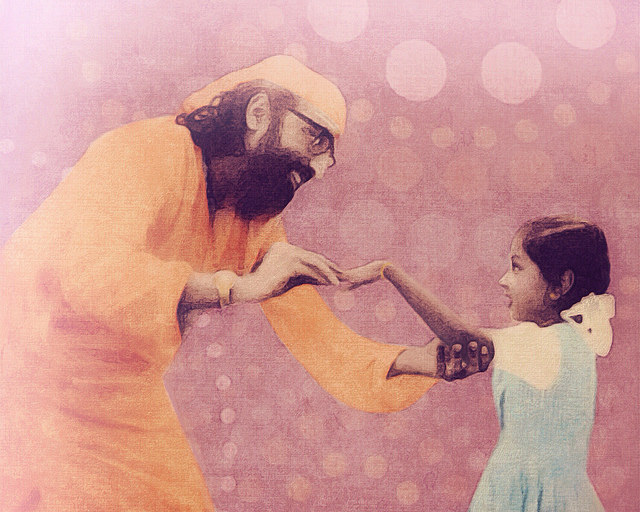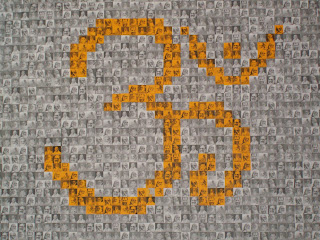Materials
Hari OM!
This blog is designed to serve as a library of art and craft ideas for our balavihar children. We hope that you will find this site useful. Please feel free to use any (or all) of the projects you see posted here. We ask, however, that you refrain from publishing (in any form) these templates, instructions, and photographs, unless you receive written permission. These projects are being provided for your own personal use or use in the Balavihar classroom.
All art projects are categorized by 1) material, 2) use, and 3) type. For example a Diya greeting card would be under the labels "Paper" and "Cards," while a Lord Hanumaan puppet would be found under "Paper," "Toys and Puppets" and "Gods and Goddesses." Most materials for these projects can easily be purchased from any local craft store — and some projects involve materials you already have laying around the house.
We would love to hear your suggestions and ideas about any of the information you find on this site. And, if you have any projects that you would like to share with other seviks/sevikas, please send a picture of the finished piece, as well as instructions on how to make the project – so we can post it.
Happy Creating!
Thursday, December 24, 2009
Origami Lotus Diya
Materials
Wednesday, December 23, 2009
Krishna Paper Bag Puppet
Monday, December 14, 2009
Japa Mala
This mala was designed for the kindergarten Balavihar class. Our lesson was "J is for Japa."
Materials
• 27 beads of your choice
• 1 meru bead — a little larger than the japa beads. (The center hole must be able to fit 2 pieces of yarn.)
• One piece of yarn (six stranded crochet cotton is good)
• Elmer's Glue
Directions
1. Dip one end of your cotton thread into the Elmer's glue. Roll the glued end between your fingers until it starts to form a hardended tip. Do the same to the other end. (see photo A below)
2. With one end of the cotton thread all 27 beads. (see photo B below)
3. Take both ends of the cotton and insert them through the meru bead. (see photo C below)
4. Make a big knot at the botton of your meru bead. You might have to knot a few times to make sure that the the knot is bigger than the hole of your bead.
5. Trim the cotton ends to a desired length.
6. You can make a simple tassle by untwisting both ends of the cotton.
* If you want to make a japa mala consisting of 108 beads, the technique is the same. To make an authentic mala a knot must be tied between each bead. (see photo D below)



Photo A
Photo B
Photo C
Photo D
Wednesday, October 28, 2009
Spinning Top
Make your very own spinning top which spins like a dream! This project was created for the kindergarten's Alphabet Safari. Our subject was "E is for Enthusiasm."
• Green poster board
• Glue Stick
Sunday, October 25, 2009
Hanumaan Puppet
For use in Balavihar classrooms (or personal use) only.
Materials
Print the template below onto light colored cardstock.
Thursday, October 1, 2009
Keychain
This keychain was made for "D is for Daddy." It is extremely easy to make. Everyone has fun stringing beads — even the youngest child!
Scratch Art
Click on picture to view enlarged.
* If the children are really ambitious "scratchers" then a paper towel might work better than a Q-tip. Too much pressure with the Q-tip can remove parts of the image.
* can also use black tempera paint as outlined above.
We Belong to One Family
Click on picture to view enlarged.
Peacock (Graphed)
Click on picture to view enlarged.
Diyas (Graphed)
Click on picture to view enlarged.
OM (Graphed)
Click on picture to view enlarged.
Lord Ganesha (Graphed)
Click on picture to view enlarged.
Shiva Lingam (Graphed)
Click on picture to view enlarged.
Hari OM Graph
Click on picture to view enlarged.
Sunday, September 20, 2009
Cow Puppet
For use in Balavihar classrooms (or personal use) only.
Click on picture to view enlarged.
Diya Cards
For use in Balavihar classrooms (or personal use) only.
Materials
2. Trace the templates onto decorative papers.
3. Cut out decorative pieces.*
4. Glue pieces onto a greeting card.
5. Decorate your diya with sequins or arcylic gems.
*Gold foil works beautifully for the flame – it reflects the light. Cut out a smaller flame in red foil to place inside the gold flame.
Monkey Puppet
For use in Balavihar classrooms (or personal use) only.
Peacock
by Alexandra M. Terzian
Materials















































